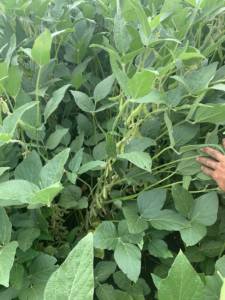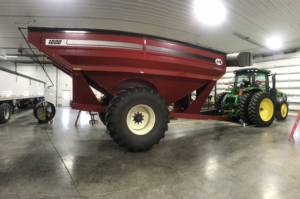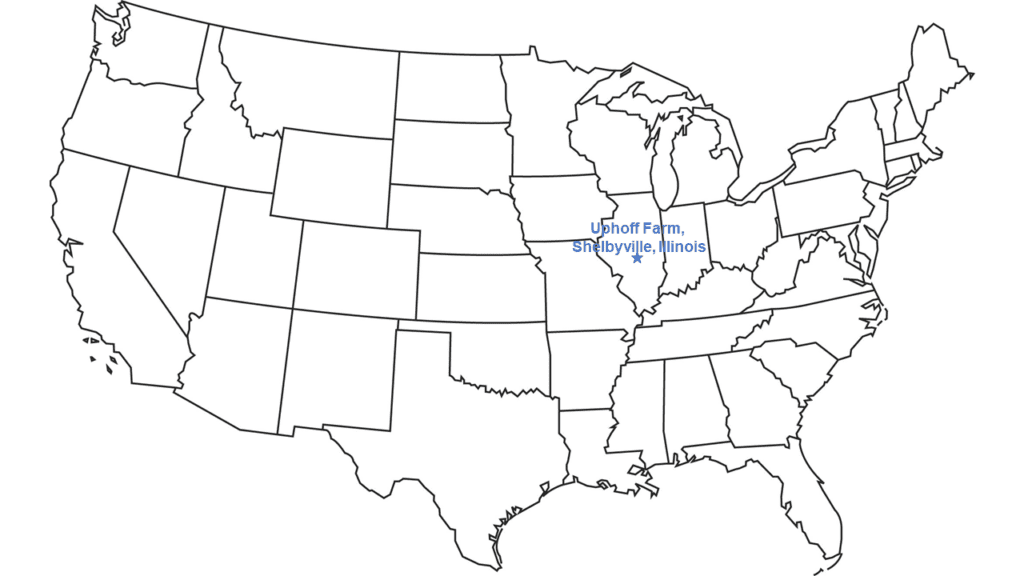 We’ve had plenty of rain in our area of central Illinois, in the heart of the U.S. Midwest. We seem to get rain every few days, which means we have plenty of moisture to make our crops. Thankfully, we missed the massive windstorm that crossed the Midwest on August 10.
We’ve had plenty of rain in our area of central Illinois, in the heart of the U.S. Midwest. We seem to get rain every few days, which means we have plenty of moisture to make our crops. Thankfully, we missed the massive windstorm that crossed the Midwest on August 10.
The rain did mean that it took a while to apply fungicides to our soybeans to control diseases and support plant health. It actually took us through early August for those applications to be finished, mostly because the cooperative that sprays for us had to wait until the soil was dry enough to get into the fields. Some of our early planted soybeans were at the right stage to be sprayed, but the ground was too wet. So, a crop duster, or small airplane, applied fungicides in those fields.
 We did need to apply insecticide with the fungicide in some of our soybean fields. In the fields where Japanese beetles and other beetles had eaten most of the top leaves of the plants, we needed to control the insects. Other fields had almost no insect feeding at the top of the plants, so an insecticide wasn’t necessary there.
We did need to apply insecticide with the fungicide in some of our soybean fields. In the fields where Japanese beetles and other beetles had eaten most of the top leaves of the plants, we needed to control the insects. Other fields had almost no insect feeding at the top of the plants, so an insecticide wasn’t necessary there.

The soybeans now look very healthy – and tall. They are up to chest-high in some fields. Pods have fully set throughout the plant, with more forming near the top thanks to all the rain. The pods at the bottom of the plant are just starting to fill the seeds inside the pods, so most of the crop is in the R4 stage. With the moisture we have, they should be able to fill the seeds out well.

Because soybeans mature based on the amount of daylight they get, we expect to start harvesting them during the first half of October.
The corn is past the “pretty” stage, meaning that rather than being dark green, signs of nitrogen deficiency, disease and maturity are starting to show up. However, the ears are set and now the plants are deciding how big the kernels will be based on the moisture available, about the R4 growth stage. In a couple weeks, the kernels will reach what we call black layer, or their physiological maturity, when they stop storing starch. Then we will wait for the corn plants and kernels to dry out enough that we can harvest them. We expect corn harvest to start the first or second week of September.

However, regardless of the crop maturity, we will wait until after the first weekend of September before we start harvest. One of my cousins is getting married that weekend and hosting her wedding reception at the farm, an adjustment in her plans thanks to COVID-19.
Her reception will be in our shop, a building where we usually store, repair and clean our farm equipment. It’s also where her older sisters held their wedding receptions last year and the year before. My dad and I have been getting our machinery ready for harvest and cleaning up the clutter in the shop so my cousin can decorate it for the reception.
Based on what we have seen so far this season, we expect a good harvest whenever we start. The corn may not be our largest crop ever, but I think it will be a big crop. And I expect the soybeans to make a big crop, as well.

